- 1Physics Division, Oak Ridge National Laboratory, Oak Ridge, TN, United States
- 2School of Physics, Engineering and Technology, University of York, York, United Kingdom
In this article, we discuss some aspects of the quenching of the single-particle strength with emphasis on the isospin dependence of long- and short-range correlations. A phenomenological analysis that connects recent Jefferson Laboratory studies with data on spectroscopic factors, is contrasted with the results of the Dispersive Optical Model approach. We consider some consequences of the model on the nature of the dressed nucleons in the nuclear medium, their effective masses, as well as other aspects of nuclear structure such as charge radii, effective charges, and spin-spin correlations. Qualitative estimates indicate that short-range correlations must play a significant role on those aspects. Despite the fact that our conclusions are perhaps speculative at this stage, we trust that the results will stimulate further experimental and theoretical work, specifically on exotic nuclei far from stability.
1 Introduction
The year 2024 marks the
An appealing argument has been given by Mottelson [6] based on the quantality parameter:
with
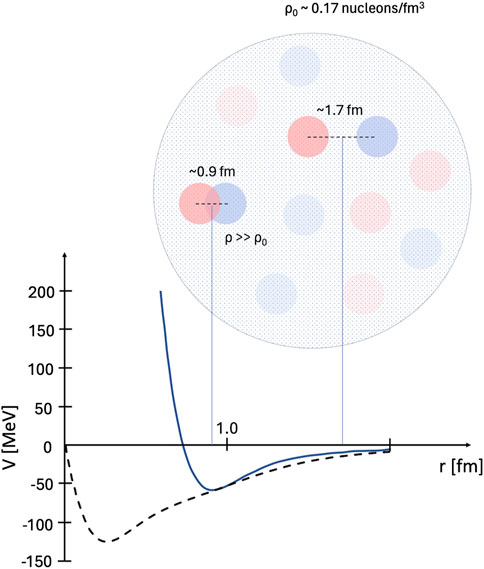
Figure 1. Central (solid line) and tensor (dashed line) AV18 potentials for the
Considering the nucleus in the simplest approximation of a non-interacting Fermi gas, the occupation probability distribution of orbitals
from which it follows that the
Due to the Pauli principle the phase-space for scattering, which goes as
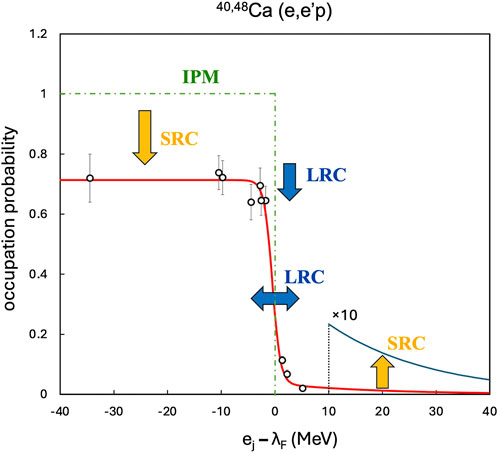
Figure 2. Occupation probabilities in 40,48Ca as determined by
Crucial evidence for the departure from the IPM comes from high-energy electron scattering showing that the nuclear ground-state wavefunction must have a marked admixture of high-momentum components. The high-momentum tail, typically parameterized as
In the following, we discuss the implications of the concepts above to some aspects of the structure of atomic nuclei with an emphasis on the evolution with isospin (neutron-proton asymmetry).
2 Quenching of spectroscopic factors
Direct reactions continue to play a major role in our understanding of the nuclear elementary modes of excitation, particularly in the characterization of the single-particle degrees of freedom and their correlations. A reaction is called direct if it proceeds directly from the initial to the final state without the formation of an intermediate compound state and, to a good approximation, the cross section can be factorized into a nuclear-structure term and a reaction term corresponding to that of a single-particle state. Thus, these reactions have been used to test models of nuclear structure by comparing spectroscopic overlaps between initial and final nuclear states. The spectroscopic overlaps are represented by spectroscopic factors, derived from the experimentally measured cross section divided by the calculated one for a single-particle state with the same energy and quantum numbers (effectively reduced cross sections).
In more detail we have for the case of a particle-adding reaction:
where
is the spectroscopic factor giving the structure information and
Using the commutation rules and tensor properties of the creation and annihilation operators
An important consequence of the equations above is that in cases where both addition and removal reactions could me measured, such as
In addition to the high-momentum tails observed in high-energy electron scattering, the depletion of the single-proton strength as observed in
Recently, there has been some debate regarding the meaning of spectroscopic factors, as these are not true observables [23, 24]. To address this question, Schiffer and collaborators [25] studied neutron-adding, neutron-removal, and proton-adding transfer reactions on the stable even Ni isotopes, with particular attention to the cross-section determinations. Spectroscopic factors derived from a consistent analysis of the data, in terms of the DWBA, were used to extract valence-orbit occupancies (vacancies) following from the sum rules discussed above. The deduced occupancies are consistent at the level of 5% indicating that, in the absence of a full ab initio calculation of structure and reaction cross sections, spectroscopic factors provide an empirically meaningful quantity to compare with theory. The use of shape deformation parameters,
Following on that work, the Argonne group carried out an extensive survey and self-consistent analysis of single-nucleon transfer reactions [26]. Summed spectroscopic strengths (Equation 1) were used to determine the factor (Equation 2) by which the observed cross sections, corrected for the reaction mechanism, differ from expectations. Across the 124 cases they analyzed, including various proton- and neutron-transfer reactions and with angular momentum transfer
The topic continues to be of much interest in the field [17] and open questions remain in regard to the evolution of
An intriguing (rather controversial) result receiving attention is the (apparent) quenching observed in one-proton (and one-neutron) removal reactions carried out at intermediate energies around 100 MeV/nucleon. The study of Refs. [27, 28] showed an unexpected dependence of the quenching, as a function of the difference
2.1 Long-range and short-range correlations
The in-medium effects are captured by the concept of a quasi-particle. At any given moment, only
The
In Figure 2, we summarize the situation with the cases of 40,48Ca that have been extensively studied. On one hand the sharp cutoff at the Fermi surface, expected for a non-interacting system, is seen to be broaden by the effect of the LRC admixing n-particle–n-hole configurations, typically of order
2.2 Isospin dependence
The isospin dependence of LRC and SRC, and their competition in very asymmetric nuclei is a question that requires further studies. By explicitly incorporating the observed [38] increase of the high-momentum component of the protons in neutron-rich nuclei, we recently proposed a phenomenological approach to examine the role of both SRC and LRC in the quenching of the single-particle strength (SP) in atomic nuclei, specifically their evolution in asymmetric nuclei and neutron matter [39]. In our approach, we start by proposing that the wave-function of the quasi-particle, representing a dressed nucleon in the nuclear medium can be written in the linear form:
This conjecture and the lack of interference terms stem from the underlying assumption that the SP, LRC, and SRC states are all orthogonal to each other. This is supported by the fact that SRC induce mixing to states of very high momentum and energy in the nuclear spectral function and there should be a small overlap with the SP and LRC components [29, 40, 41]. In near doubly magic nuclei, for which both pairing and deformation manifest themselves as vibrations, the individual terms in Equation 3 can be justified in first order perturbation as one-particle–one-hole (1p1h) (PVC) and two-particle–two-hole (2p2h) (PC) excitations. From the general arguments given in Ref. [39], we adopted the following expressions for the isospin dependence of PVC and PC:
The findings in Ref. [38] from JLab exclusive
with the slope parameters
We end this section by comparing our predictions with the results of Refs. [27, 28]. For this purpose, we use the equations given in Ref. [42] to convert
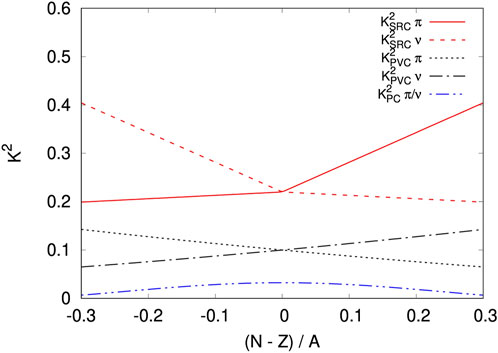
Figure 3. Square amplitude
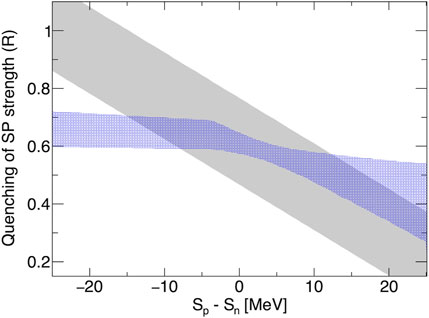
Figure 4. Quenching of proton single-particle strength
2.3 Comparison with the dispersive optical model
Dickhoff and collaborators have led extensive studies on the application of the dispersive-optical-model (DOM) to describe simultaneously a wealth of structure and reaction experimental data (see Ref. [47] for a review). Of particular relevance here is their study of the neutron-proton asymmetry dependence of correlations in nuclei [48]. In that work, elastic-scattering measurements, total and reaction cross-section measurements,
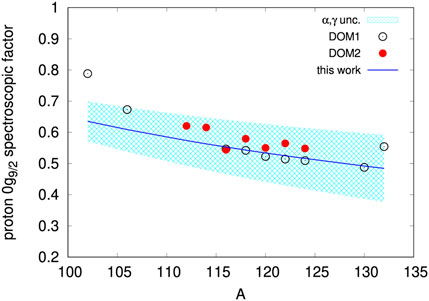
Figure 5. Comparison of dispersive-optical-model calculations [48] of the proton
3 The nature of the dressed nucleons
As discussed earlier, the arguments put forward by Brueckner [10] suggest that in the presence of SRC components in the
In terms of the underlying independent single-particle shell structure, we could qualitatively interpret the effect as follows: a high-momentum proton (neutron) scatters from a neutron (proton) in a
If we further assume that
with
giving a mixing amplitude in Equation 7 of
Assuming a single-
leading finally to
4 Effective mass
The concept of nucleon effective mass,
Bertsch and Kuo [29] have connected the effective mass to the depletion of the single-particle strength. By evaluating the contributions to the single-particle energy in second-order perturbation theory, they obtained the relation:
approximately equal to the depletion of the single-particle strength of the state. By relating to Equations 2, 6, we can rewrite the expression above in terms of
from which we predict the neutron and proton effective masses as a function of
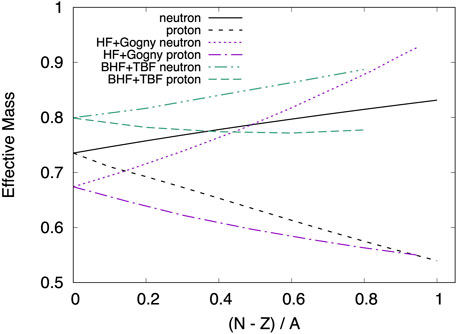
Figure 6. Effective mass for protons and neutrons following Ref. [29] and the quenching factor calculated in Ref. [39] (assuming
Our results are compared with the values obtained in Ref. [58] from a single-nucleon potential derived within the Hartree-Fock approach using a modified Gogny effective interaction (MDI) [59]. We also compare with the nuclear matter predictions on the effective mass (at nuclear saturation density) in a Brueckner-Hartree-Fock (BHF) nuclear many-body approach [60]. In this model, which gives satisfactory nuclear matter bulk properties, the nucleon force includes a two-body component from the Argonne V18 potential and a three-body term constructed from the meson-exchange-current approach. As seen, both predictions give different nucleon effective masses, reflecting their dependence on the interaction used. It is interesting to note that in order to reproduce the nuclear matter predictions, we would need a SRC component of
As discussed in [39] we can also speculate about the nature of a quasi-proton (nuclear polaron [61]) in neutron matter (nM). For infinite matter at saturation density we can neglect surface and pairing coupling terms, both expected to be small, and take the limit of
In the following, we turn our attention to finite nuclei and the implications of the phenomenological model to aspects of nuclear structure such as charge radii, effective charges, and spin-spin correlations.
5 Charge radii
The nuclear charge radius is a measure of the distribution of protons in the nucleus and it constitutes one of the fundamental nuclear properties that, together with masses, can challenge nuclear models. A laser spectroscopy measurement [62] reported anomalously large charge radii in 50,52Ca relative to 48Ca, beyond what state-of-the-art ab initio calculations could reproduce. This result could indicate the occurrence of proton excitations (core-breaking) across the
A simple estimate of the effect due to SRC follows from the consideration that protons in the quasi-deuteron configuration are associated with orbits with higher principal oscillator numbers that induce a change in the proton radius
where
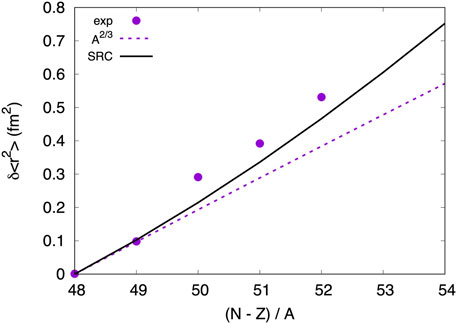
Figure 7. Change in the nuclear mean-square charge radii,
6 Effective charges
It is interesting to comment that the same mechanism will contribute to the nucleons’ effective charges. In the shell model, core polarization effects result in
giving a value of the order of 0.1 near 40Ca. This contribution should be present even in the absence of any core-polarization effect.
7 Ground-state spin-spin correlations
This section explores the possible effect of SRCs to the ground-state spin-spin correlations in order to provide a plausible explanation for the reported discrepancy between experimental and shel-model results.
Within the context of understanding the role played by isoscalar pairing in the ground states of
The
These can be determined by measuring the
where the sums are typically up to
In the experiments carried out at the RCNP facility in Osaka, high energy-resolution proton inelastic scattering at
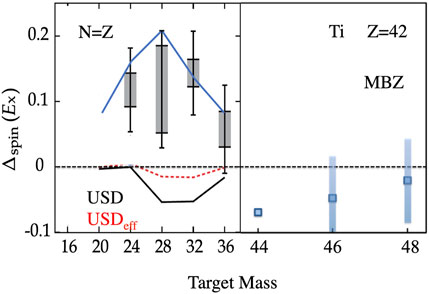
Figure 8. Left panel: Spin-spin correlations for
In Ref. [70] a formalism was developed to calculate the matrix elements of the
What could be the reason for the positive values? Is it possible that we are observing the effects of the deuteron cloud dressing the nucleons related to the SRC quenching of spectroscopic factors? In fact, we can estimate a correction to the USD results based on the value of
bringing the estimates closer to the experimental measurements as shown in Figure 8. It seems clear that further theoretical and experimental work is required to fully answer remaining questions as to the microscopic origin of the spin–spin correlations. In particular, a compelling experimental direction to follow would be to study their isospin dependence. An approved experiment at iThemba [71] will extend the studies of Ref. [67] measuring the spin-spin correlations in the ground states of 46,48Ti (see right panel in Figure 8), for which the shell model using the MBZ interaction [72] predicts negative values. For
8 Conclusion
The quenching of single-particle strength in atomic nuclei continues to be an active area of research in nuclear physics. Modern advances in direct reactions, particularly suited to probe nucleon occupancies, are providing new insights for a quantitative understanding of this phenomenon, intimately related to the fundamental nature of nucleons in the nuclear medium. In an attempt to connect recent studies on SRC from Jefferson Laboratory with data on spectroscopic factors, we have proposed a phenomenological model discussed in Sec. 2 that includes the combined effects of SRC and LRC (PVC and PC). Our results are in agreement with those of the DOM.
We have explored potential implications of our phenomenological analysis on some other aspects of nuclear structure, with special emphasis on the evolution with isospin. In particular, we discussed the subjects of effective masses, charge radii and effective charges, and spin-spin correlations. We showed that our estimates for the asymmetry dependence of effective masses due to SRC are consistent with microscopic calculations. More qualitative estimates of charge radii and effective charges, and spin-spin correlations reveal observable effects due to SRC on these properties.
While perhaps rather speculative at this stage, our conclusions suggest the significant role that SRC play in the nature of dressed nucleons in the nuclear medium, and we trust that our results will stimulate additional work. On the experimental side, existing accelerator facilities and new detector systems with increased sensitivity and resolving power are positioning us to access exotic beams to study exclusive direct reactions, in reverse kinematics, to explore the isospin degree of freedom and shed further light on the topic. On the theory side, new ab initio developments and the large increase in computer power becoming available are shaping a path to a predictive model of nuclei and their reactions. Achieving that ultimate goal will require a strong synergy between experiment and theory to design the best possible experiments that will inform of important improvements in the model. In turn, new theoretical insights will lead to new experimental programs that will be, again, contrasted with theory. One cannot but look forward to these exciting developments.
Data availability statement
The data analyzed in this study is subject to the following licenses/restrictions: None. Requests to access these datasets should be directed to Augusto O. Macchiavelli bWFjY2hpYXZlbGFvQG9ybmwuZ292.
Author contributions
AOM: Writing–original draft, Writing–review and editing. SP: Writing–original draft, Writing–review and editing. MP: Writing–original draft, Writing–review and editing.
Funding
The author(s) declare that financial support was received for the research, authorship, and/or publication of this article. This work was supported by the Royal Society, the United Kingdom STFC under Grant numbers ST/P003885/1, ST/M006433/1, ST/V001035/1, ST/L005727/1, the Laboratory Directed Research and Development (LDRD) Program of Oak Ridge National Laboratory, and the U.S. Department of Energy, Office of Science, Office of Nuclear Physics under Contract No. DE-AC05-00OR22725.
Acknowledgments
AOM would like to thank the Royal Society for financial support and the Department of Physics at the University of York for their kind hospitality during the course of this work and the many “cortados” that were crucial for the completion of the manuscript.
Conflict of interest
The authors declare that the research was conducted in the absence of any commercial or financial relationships that could be construed as a potential conflict of interest.
Generative AI statement
The author(s) declare that no Generative AI was used in the creation of this manuscript.
Publisher’s note
All claims expressed in this article are solely those of the authors and do not necessarily represent those of their affiliated organizations, or those of the publisher, the editors and the reviewers. Any product that may be evaluated in this article, or claim that may be made by its manufacturer, is not guaranteed or endorsed by the publisher.
Footnotes
1The validity of the shell model is discussed in detail in Ref. [5].
2At this point it is important to note that the quenching extracted from
3The value of
4For an overview on effective masses we point to the review of Bao-An Li and collaborators [57] and references therein.
References
1. Mayer MG. On closed shells in nuclei. ii. Phys Rev (1949) 75:1969–70. doi:10.1103/PhysRev.75.1969
2. Haxel O, Jensen JHD, Suess HE. On the “magic numbers” in nuclear structure. Phys Rev (1949) 75:1766. doi:10.1103/PhysRev.75.1766.2
5. Gomes L, Walecka J, Weisskopf V. Properties of nuclear matter. Ann Phys (1958) 3:241–74. doi:10.1016/0003-4916(58)90019-8
6. Mottelson B. Why are nuclei described by independent particle motion. Nucl Phys A (1999) 649:45. doi:10.1016/s0375-9474(99)00037-8
7. De Witt Huberts P. Are nuclei strongly correlated fermi liquids? empirical evidence from (e,ep) spectral functions. Prog Part Nucl Phys (1990) 24:205–18. doi:10.1016/0146-6410(90)90017-X
8. Wiringa RB, Arriaga A, Pandharipande VR. Quadratic momentum dependence in the nucleon-nucleon interaction. Phys Rev C (2003) 68:054006. doi:10.1103/PhysRevC.68.054006
9. Brueckner K. Two-body forces and nuclear saturation. iii. details of the structure of the nucleus. Phys Rev (1955) 97:1353–66. doi:10.1103/PhysRev.97.1353
11. Schiavilla R, Wiringa RB, Pieper SC, Carlson J. Tensor forces and the ground-state structure of nuclei. Phys Rev Lett (2007) 98:132501. doi:10.1103/physrevlett.98.132501
13. Glauber R, et al. Lectures in theoretical physics. New York, NY: Interscience Publishers, Inc, (1959) 1. 315 p.
14. Bertulani CA. Relativistic continuum-continuum coupling in the dissociation of halo nuclei. Phys Rev Lett (2005) 94:072701. doi:10.1103/PhysRevLett.94.072701
15. Gade A, Adrich P, Bazin D, Bowen MD, Brown BA, Campbell CM, et al. Reduction of spectroscopic strength: weakly-bound and strongly-bound single-particle states studied using one-nucleon knockout reactions. Phys Rev C (2008) 77:044306. doi:10.1103/PhysRevC.77.044306
16. Ogata K, Bertulani CA. Dynamical relativistic effects in breakup processes of halo nuclei. Prog Theor Phys (2010) 123:701–18. doi:10.1143/PTP.123.701
17. Aumann T, Barbieri C, Bazin D, Bertulani C, Bonaccorso A, Dickhoff W, et al. Quenching of single-particle strength from direct reactions with stable and rare-isotope beams. Prog Part Nucl Phys (2021) 118:103847. doi:10.1016/j.ppnp.2021.103847
18. Macfarlane MH, French JB. Stripping reactions and the structure of light and intermediate nuclei. Rev Mod Phys (1960) 32:567–691. doi:10.1103/RevModPhys.32.567
19. Lapikas L. Quasi-elastic electron scattering off nuclei. Nucl Phys A (1993) 553:297–308. doi:10.1016/0375-9474(93)90630-G
20. Kramer G, Blok H, Lapikas L. A consistent analysis of (e,e’p) and (d,3he) experiments. Nucl Phys A (2001) 679:267–86. doi:10.1016/S0375-9474(00)00379-1
21. Lapikás L, van der Steenhoven G, Frankfurt L, Strikman M, Zhalov M. Transparency of 12C for protons. Phys Rev C (2000) 61:064325. doi:10.1103/PhysRevC.61.064325
22. Frankfurt L, Strikman M, Zhalov M. Single-particle strength restoration and nuclear transparency in high-Q2 exclusive (e,e′p) reactions. Phys Lett B (2001) 503:73–80. doi:10.1016/S0370-2693(01)00173-3
23. Furnstahl R, Hammer HW. Are occupation numbers observable? Phys Lett B (2002) 531:203–8. doi:10.1016/S0370-2693(01)01504-0
24. Furnstahl RJ, Schwenk A. How should one formulate, extract and interpret ‘non-observables’ for nuclei? J Phys G: Nucl Part Phys (2010) 37:064005. doi:10.1088/0954-3899/37/6/064005
25. Schiffer JP, Hoffman CR, Kay BP, Clark JA, Deibel CM, Freeman SJ, et al. Test of sum rules in nucleon transfer reactions. Phys Rev Lett (2012) 108:022501. doi:10.1103/PhysRevLett.108.022501
26. Kay BP, Schiffer JP, Freeman SJ. Quenching of cross sections in nucleon transfer reactions. Phys Rev Lett (2013) 111:042502. doi:10.1103/PhysRevLett.111.042502
27. Tostevin JA, Gade A. Systematics of intermediate-energy single-nucleon removal cross sections. Phys Rev C (2014) 90:057602. doi:10.1103/PhysRevC.90.057602
28. Tostevin JA, Gade A. Updated systematics of intermediate-energy single-nucleon removal cross sections. Phys Rev C (2021) 103:054610. doi:10.1103/PhysRevC.103.054610
29. Bertsch G, Kuo T. Effective mass in nuclei. Nucl Phys A (1968) 112:204–8. doi:10.1016/0375-9474(68)90230-3
30. Dickhoff W, Barbieri C. Self-consistent green’s function method for nuclei and nuclear matter. Prog Part Nucl Phys (2004) 52:377–496. doi:10.1016/j.ppnp.2004.02.038
31. Brueckner KA, Eden RJ, Francis NC. High-energy reactions and the evidence for correlations in the nuclear ground-state wave function. Phys Rev (1955) 98:1445–55. doi:10.1103/PhysRev.98.1445
32. Flavigny F, Gillibert A, Nalpas L, Obertelli A, Keeley N, Barbieri C, et al. Limited asymmetry dependence of correlations from single nucleon transfer. Phys Rev Lett (2013) 110:122503. doi:10.1103/PhysRevLett.110.122503
33. Devins D, Friesel D, Jones W, Attard A, Svalbe I, Officer V, et al. The 12c(p,2p)11b reaction at 100 mev. Aust J Phys (1979) 32:323–34. doi:10.1071/ph790323
34. Atkinson MC, Blok HP, Lapikás L, Charity RJ, Dickhoff WH. Validity of the distorted-wave impulse-approximation description of 40Ca(e, e’p)39Kdata using only ingredients from a nonlocal dispersive optical model. Phys Rev C (2018) 98. doi:10.1103/PhysRevC.98.044627
35. Hen O, Miller GA, Piasetzky E, Weinstein LB. Nucleon-nucleon correlations, short-lived excitations, and the quarks within. Rev Mod Phys (2017) 89:045002. doi:10.1103/revmodphys.89.045002
36. Frankfurt LL, Strikman MI. High-energy phenomena, short range nuclear structure and QCD. Phys Rept (1981) 76:215–347. doi:10.1016/0370-1573(81)90129-0
37. Subedi R, Shneor R, Monaghan P, Anderson BD, Aniol K, Annand J, et al. Probing cold dense nuclear matter. Science (2008) 320:1476–8. doi:10.1126/science.1156675
38. The CLAS collaboration. Probing high-momentum protons and neutrons inneutron-rich nuclei. Nature(2018) 560:617–21. doi:10.1038/s41586-018-0400-z-1154-1155
39. Paschalis S, Petri M, Macchiavelli A, Hen O, Piasetzky E. Nucleon-nucleon correlations and the single-particle strength in atomic nuclei. Phys Lett B (2020) 800:135110. doi:10.1016/j.physletb.2019.135110
40. Ciofi degli Atti C. In-medium short-range dynamics of nucleons: recent theoretical and experimental advances. Phys Rept (2015) 590:1–85. doi:10.1016/j.physrep.2015.06.002
41. Weiss R, Korover I, Piasetzky E, Hen O, Barnea N. Energy and momentum dependence of nuclear short-range correlations - spectral function, exclusive scattering experiments and the contact formalism. Phys Lett B (2019) 791:242–8. doi:10.1016/j.physletb.2019.02.019
42. Vogt K, Hartmann T, Zilges A. Simple parametrization of single- and two-nucleon separation energies in terms of the neutron to proton ratio n/z. Phys Lett B (2001) 517:255–60. doi:10.1016/S0370-2693(01)01014-0
43. Pohl T, Sun YL, Obertelli A, Lee J, Gómez-Ramos M, Ogata K, et al. Multiple mechanisms in proton-induced nucleon removal at ∼ 100 MeV/Nucleon. Phys Rev Lett (2023) 130:172501. doi:10.1103/PhysRevLett.130.172501
44. Atar L, Paschalis S, Barbieri C, Bertulani CA, Díaz Fernández P, Holl M, et al. Quasifree (p, 2p) reactions on oxygen isotopes: observation of isospin independence of the reduced single-particle strength. Phys Rev Lett (2018) 120:052501. doi:10.1103/PhysRevLett.120.052501
45. Kay BP, Tang TL, Tolstukhin IA, Roderick GB, Mitchell AJ, Ayyad Y, et al. Quenching of single-particle strength in a = 15 nuclei. Phys Rev Lett (2022) 129:152501. doi:10.1103/PhysRevLett.129.152501
46. Manfredi J, Lee J, Rogers AM, Tsang MB, Lynch WG, Anderson C, et al. Quenching of single-particle strengths in direct reactions. Phys Rev C (2021) 104:024608. doi:10.1103/PhysRevC.104.024608
47. Dickhoff WH, Charity RJ, Mahzoon MH. Novel applications of the dispersive optical model. J Phys G: Nucl Part Phys (2017) 44:033001. doi:10.1088/1361-6471/44/3/033001
48. Mueller JM, Charity RJ, Shane R, Sobotka LG, Waldecker SJ, Dickhoff WH, et al. Asymmetry dependence of nucleon correlations in spherical nuclei extracted from a dispersive-optical-model analysis. Phys Rev C (2011) 83:064605. doi:10.1103/PhysRevC.83.064605
49. Levinger J. Modified quasi-deutron model. Phys Lett B (1979) 82:181–2. doi:10.1016/0370-2693(79)90730-5
50. Levinger J. Fifty years of the quasi-deuteron model. Nucl Phys A (2002) 699:255–60. doi:10.1016/S0375-9474(01)01501-9
51. Neff T, Feldmeier H. Tensor correlations in the unitary correlation operator method. Nucl Phys A (2003) 713:311–71. doi:10.1016/S0375-9474(02)01307-6
52. Neff T, Feldmeier H, Horiuchi W. Short-range correlations in nuclei with similarity renormalization group transformations. Phys Rev C (2015) 92:024003. doi:10.1103/PhysRevC.92.024003
53. Tropiano AJ, Bogner SK, Furnstahl RJ, Hisham MA. Quasi-deuteron model at low renormalization group resolution. Phys Rev C (2022) 106:024324. doi:10.1103/PhysRevC.106.024324
54. Burrello S, Typel S. Embedding short-range correlations in relativistic density functionals through quasi-deuterons. The Eur Phys J A (2022) 58:120. doi:10.1140/epja/s10050-022-00765-z
55. Etchegoyen A, Etchegoyen M, Vergini E. Evaluation of Hamiltonian two-body matrix elements. Computer Phys Commun (1989) 55:227–31. doi:10.1016/0010-4655(89)90079-9
56. Xu J, Chen LW, Li BA, Ma HR. Effects of isospin and momentum dependent interactions on thermal properties of asymmetric nuclear matter. Phys Rev C (2008) 77:014302. doi:10.1103/PhysRevC.77.014302
57. Li BA, Cai BJ, Chen LW, Xu J. Nucleon effective masses in neutron-rich matter. Prog Part Nucl Phys (2018) 99:29–119. doi:10.1016/j.ppnp.2018.01.001
58. Li BA, Chen LW. Nucleon-nucleon cross sections in neutron-rich matter and isospin transport in heavy-ion reactions at intermediate energies. Phys Rev C (2005) 72:064611. doi:10.1103/PhysRevC.72.064611
59. Das CB, Das Gupta S, Gale C, Li BA. Momentum dependence of symmetry potential in asymmetric nuclear matter for transport model calculations. Phys Rev C (2003) 67:034611. doi:10.1103/PhysRevC.67.034611
60. Li A, Hu JN, Shang XL, Zuo W. Nonrelativistic nucleon effective masses in nuclear matter: Brueckner-Hartree-Fock model versus relativistic Hartree-Fock model. Phys Rev C (2016) 93:015803. doi:10.1103/PhysRevC.93.015803
61. Kutschera M, Wójcik W. Proton impurity in the neutron matter: a nuclear polaron problem. Phys Rev C (1993) 47:1077–85. doi:10.1103/PhysRevC.47.1077
62. Garcia Ruiz RF, Bissell ML, Blaum K, Ekström A, Frömmgen N, Hagen G, et al. Unexpectedly large charge radii of neutron-rich calcium isotopes. Nat Phys (2016) 12:594–8. doi:10.1038/nphys3645
63. Enciu M, Liu HN, Obertelli A, Doornenbal P, Nowacki F, Ogata K, et al. Extended p3/2 neutron orbital and the n = 32 shell closure in 52Ca. Phys Rev Lett (2022) 129 262501. doi:10.1103/PhysRevLett.129.262501
64. Miller G, Beck A, Beck SMT, Weinstein L, Piasetzky E, Hen O. Can long-range nuclear properties be influenced by short range interactions? a chiral dynamics estimate. Phys Lett B (2019) 793:360–4. doi:10.1016/j.physletb.2019.05.010
66. Frauendorf S, Macchiavelli A. Overview of neutron–proton pairing. Prog Part Nucl Phys (2014) 78:24–90. doi:10.1016/j.ppnp.2014.07.001
67. Matsubara H, Tamii A, Nakada H, Adachi T, Carter J, Dozono M, et al. Nonquenched isoscalar spin-m1 excitations in sd-shell nuclei. Phys Rev Lett (2015) 115 102501. doi:10.1103/PhysRevLett.115.102501
68. Matsubara H. Isoscalar and isovector spin-M1 transitions from the even-even, N = Z nuclei across the sd-shell region. Ph.D Thesis, Department Physics, Osaka Univesity (2010).
69. Sasano M, Sakai H, Yako K, Wakasa T, Asaji S, Fujita K, et al. Gamow-teller unit cross sections of the (p, n) reaction at 198 and 297 mev on medium-heavy nuclei. Phys Rev (2009) 79:024602. doi:10.1103/PhysRevC.79.024602
70. Van Isacker P, Macchiavelli AO. Neutron–proton spin–spin correlations in the ground states of N=Z nuclei. Eur Phys J A (2021) 57:178. doi:10.1140/epja/s10050-021-00489-6
71. Macchiavelli AO, Crawford HL, Campbell CM, Clark RM, Cromaz M, Fallon P. Ground state neutron-proton spin-spin correlations studied by (p,p’) and (d,d’) scattering. iThemba Proposal PR353 (2019).
Keywords: single-particle strength, long- and short-range correlations, nuclear reactions, isospin dependence, effective mass, neutron matter, charge radii and effective charges, spin-spin correlations
Citation: Macchiavelli AO, Paschalis S and Petri M (2025) Some aspects of the quenching of single-particle strength in atomic nuclei. Front. Phys. 13:1530428. doi: 10.3389/fphy.2025.1530428
Received: 18 November 2024; Accepted: 20 January 2025;
Published: 19 March 2025.
Edited by:
Sean Freeman, European Organization for Nuclear Research (CERN), SwitzerlandReviewed by:
Grigory Nigmatkulov, University of Illinois Chicago, United StatesDaniel Bazin, Michigan State University, United States
Copyright © 2025 Macchiavelli, Paschalis and Petri. This is an open-access article distributed under the terms of the Creative Commons Attribution License (CC BY). The use, distribution or reproduction in other forums is permitted, provided the original author(s) and the copyright owner(s) are credited and that the original publication in this journal is cited, in accordance with accepted academic practice. No use, distribution or reproduction is permitted which does not comply with these terms.
*Correspondence: Augusto O. Macchiavelli, bWFjY2hpYXZlbGFvQG9ybmwuZ292
 Augusto O. Macchiavelli
Augusto O. Macchiavelli Stefanos Paschalis
Stefanos Paschalis Marina Petri
Marina Petri